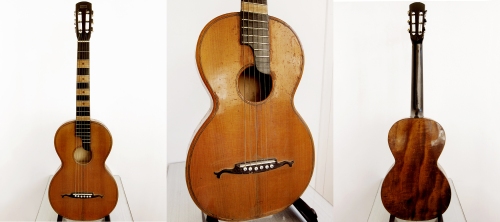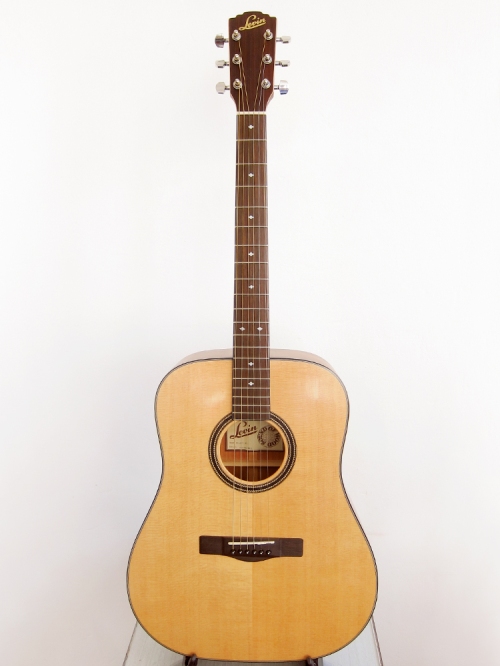Alvarez 5014
 Alvarez 5014, made in Japan in 1973
Alvarez 5014, made in Japan in 1973
I recently found a 000-sized Alvarez for my friend Wolf. It’s a really nice little guitar that we both were impressed by. These guitars were made in Japan for the US market and imported by St. Louis Music in Missouri, the guys behind Westone. According to Wikipedia and Alvarez own site it was the legendary Kazuo Yairi that founded the brand in 1965 to make cheaper Yairi guitars for the US market. Having said that, it’s still unclear if all Alvarez guitars were really made in the K. Yairi factory in Kani, Gifu in Japan or outsourced on other factories in Japan, see Jedistar. These early 1970’s Alvarez are a bit different to the later Alvarez-Yairi guitars that got famous in the late 1970’s and 1980’s when musicians like Crosby, Stills & Nash and Bob Weir endorsed them. Not only is the label inside and head inlays different, but they also seems to have their own models, the later Alvarez-Yairi are exact copies of the Yairi models of the time but made for export to the US. Since there is a sticker with a serial number inside that correspond perfectly to the Emperor code that K. Yairi uses things point towards the Yairi factory. As with everything made in Japan during the 1970’s, there are some questions we might never find the answer too. Either way we have an awesome Japan made Martin 000-18 copy that Wolf is very excited to play, especially with my Bill Lawrence A-300 in the soundhole.

 The serial number starts with 48 which signify the 48th year of the reign of emperor Shōwa, which was in 1973. You can check the serial numbers of your Yairi or Alvarez here
The serial number starts with 48 which signify the 48th year of the reign of emperor Shōwa, which was in 1973. You can check the serial numbers of your Yairi or Alvarez here




















